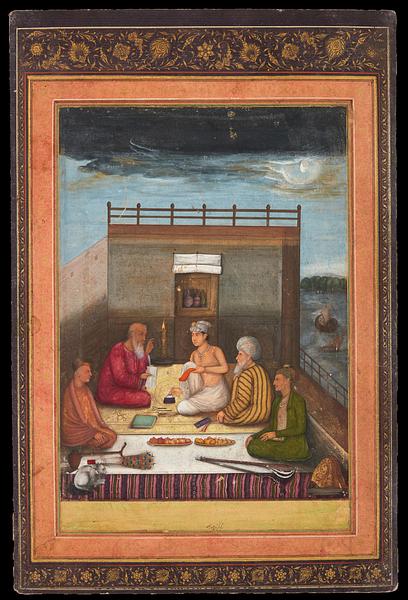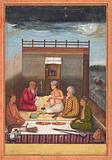The scene is set on a rather simple roof terrace with a view of a moonlit river landscape with two ships. Attention is, however, first and foremost focused on a group of five men, a cat, and a number of objects, all of them depicted naturalistically in warm light.
There seem to be three light sources. The moon, the tall oil lamp, which is the one that first and foremost defines the shadows on the terrace, and finally a hidden light source where the viewer is, giving a clear view of both faces and objects. The interest in Mughal painting in light and shadow during the period was inspired by European art, and is in clear contrast to classical Persian painting, which is flat, shadowless, and dominated by bright primary colors. The depiction is very similar to the ones that were made by the artist Payag in around 1640-1650,
[1] and the painting can with some reservations be attributed to him.
Depictions of princes, both young and old, seeking the company and council of religious men were common in Indian art from the end of the 16th century and far into the 17th. (See e.g.
14/2016.) They illustrate that the ruling class also sought values other than secular power.
The atmosphere in this beautiful painting is contemplative, although the young prince is clearly concentrating on what the red-clad learned man is relating. The man clad in orange is a Hindu, while the others are probably Muslims. The period under the Great Mughal Akbar (r. 1556-1605), but also under this successors Jahangir (r. 1605-1627) and Shah Jahan (r. 1628-1657), was characterized by fairly great religious tolerance and openness.
In addition to the finely rendered depictions of the figures, which almost seem to have the character of true portraits, the various garments and objects, from writing tools and fruit bowls to the peacock fan and long-necked lute, are rendered with great care.


